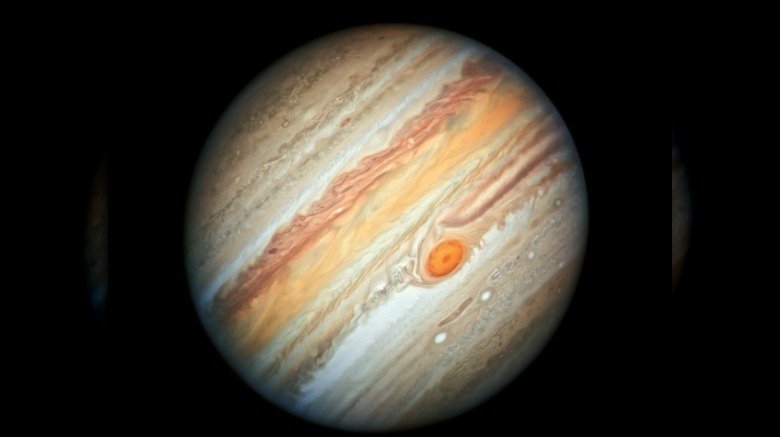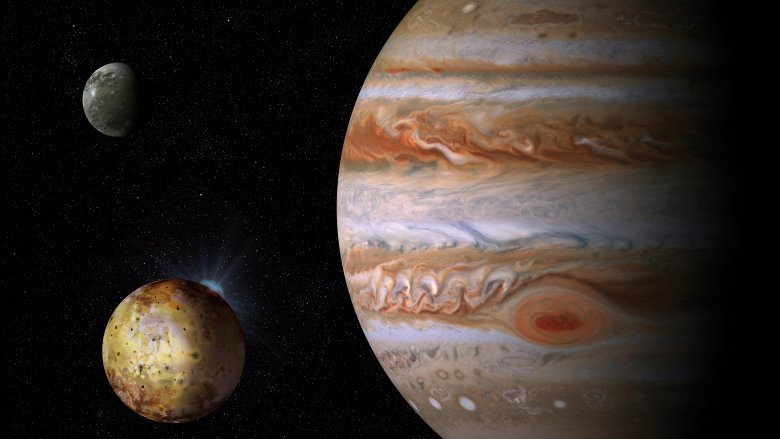Why Does Jupiter Have So Many Moons?
There's a reason people call Jupiter a gas giant. As NASA describes, with its "windy clouds of ammonia and water, floating in an atmosphere of hydrogen and helium," Jupiter packs more than double the mass of all the other planets in the solar system combined. Jupiter's famous Great Red Spot is a centuries-old storm that's larger than the entire Earth. This gas giant is also an old fart. According to Space.com, Jupiter is an estimated 4.5 billion years old, making it the most senior citizen in the solar community.
Despite its status as a gassy old fart, the fifth planet from the sun seems like a lot of fun. Fun fact: as of 2018, Jupiter boasts 79 moons, the most of any planet in the solar system, according to How Stuff Works. So you could say that Jupiter moons the universe more than any of its planetary siblings. Like an insecure younger brother, Mother Earth obviously wants to know why Jupiter gets to be the biggest planet, the oldest planet, and have the most moons. Seriously, life isn't fair.
Why Jupiter is the star of moons
So what makes Jupiter so popular with moons? In short, size matters. Because Jupiter is more than 300 times larger than Earth, it has way more gravity, making it way more capable of attracting moons. Those moons are also way more attractive than Earth's moon because the universe is cruel. The moon named Io, for instance, sounds really hot because it has a bunch of active volcanoes. Meanwhile, Europa is thought to harbor alien life. And how much do you want to bet that UFOs visited Jupiter before they came to Earth?
Jupiter's monopoly on moons is also aided by its distance from the sun, which would steal all love those beautiful moons if Jupiter were closer. In fact, French astronomer Fathi Namouni has argued that in other solar systems where Jupiter-like gas giants are closer to their stars, these so-called "hot Jupiters" don't have any moons at all.

